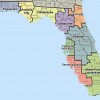 Agriculture, natural resources, and related food industries remain a significant force in the economy of Florida, and it is important to recognize their economic contributions for informed public policy. The economic contributions of these industries were re-evaluated for calendar year 2012 to update previous reports and to provide current information on economic trends in the wake of the historic global recession of 2007–2009. This 116-page report was written by Alan W. Hodges, Mohammad Rahmani, and Thomas J. Stevens, and published by the UF Department of Food and Resource Economics, July 2014.
Agriculture, natural resources, and related food industries remain a significant force in the economy of Florida, and it is important to recognize their economic contributions for informed public policy. The economic contributions of these industries were re-evaluated for calendar year 2012 to update previous reports and to provide current information on economic trends in the wake of the historic global recession of 2007–2009. This 116-page report was written by Alan W. Hodges, Mohammad Rahmani, and Thomas J. Stevens, and published by the UF Department of Food and Resource Economics, July 2014.
http://edis.ifas.ufl.edu/fe954
Author: dihagan
Giant Woolly Bear (larva), Giant or Great Leopard Moth (adult) Hypercompe scribonia (Stoll 1790) (Lepidoptera: Erebidae: Arctiinae)
 The giant leopard moth is our largest eastern tiger moth. It was formerly in the family Arctiidae, which now composes the subfamily Arctiinae in the family Erebidae. Giant leopard moths are nocturnal. Males are commonly attracted to lights at night. Sometimes dozens of males come to bright lights set out in good habitat. This 6-page fact sheet was written by Donald W. Hall, and published by the UF Department of Entomology and Nematology, August 2014.
The giant leopard moth is our largest eastern tiger moth. It was formerly in the family Arctiidae, which now composes the subfamily Arctiinae in the family Erebidae. Giant leopard moths are nocturnal. Males are commonly attracted to lights at night. Sometimes dozens of males come to bright lights set out in good habitat. This 6-page fact sheet was written by Donald W. Hall, and published by the UF Department of Entomology and Nematology, August 2014.
http://edis.ifas.ufl.edu/in1043
Hydration Myths
 Whether at school, work, or running errands, it is common to see people sipping on their water bottles. This fashionable trend is a healthy one because water is essential for life. But while most people know that drinking water is good for them, many misconceptions exist about water and hydration. Learn the truth behind some of the most common hydration myths. This 4-page fact sheet was written by Lauren Caruso, Karla P. Shelnutt, and Gail Kauwell, and published by the UF Department of Family Youth and Community Sciences, August 2014.
Whether at school, work, or running errands, it is common to see people sipping on their water bottles. This fashionable trend is a healthy one because water is essential for life. But while most people know that drinking water is good for them, many misconceptions exist about water and hydration. Learn the truth behind some of the most common hydration myths. This 4-page fact sheet was written by Lauren Caruso, Karla P. Shelnutt, and Gail Kauwell, and published by the UF Department of Family Youth and Community Sciences, August 2014.
http://edis.ifas.ufl.edu/fy1409
Positive Discipline for Youth
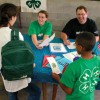 Working with youth, especially other people’s, can be a challenge. While some are better behaved than others, they all need acceptance and the opportunity to learn. Especially in groups of mixed ages, experience, or interests, the challenge of a youth leader is to see that disruptive youth do not prevent others from learning or having fun. Their very presence in the group, combined with your wise guidance, will help them learn what is socially acceptable and how to do what is right. This information sheet will help you to understand youth better and to provide some ideas on how to deal with the unruly kids with minimal disruption of the learning situation. This 5-page fact sheet was written by Heidi L. Radunovich, Keith G. Diem, and Georgene Bender, and published by the UF Department of 4-H Youth Development, July 2014.
Working with youth, especially other people’s, can be a challenge. While some are better behaved than others, they all need acceptance and the opportunity to learn. Especially in groups of mixed ages, experience, or interests, the challenge of a youth leader is to see that disruptive youth do not prevent others from learning or having fun. Their very presence in the group, combined with your wise guidance, will help them learn what is socially acceptable and how to do what is right. This information sheet will help you to understand youth better and to provide some ideas on how to deal with the unruly kids with minimal disruption of the learning situation. This 5-page fact sheet was written by Heidi L. Radunovich, Keith G. Diem, and Georgene Bender, and published by the UF Department of 4-H Youth Development, July 2014.
http://edis.ifas.ufl.edu/4h341
Making Learning Fun
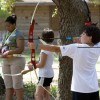 As a 4-H volunteer, one of your most important roles is helping youth learn. Especially because membership in 4-H is voluntary, learning in 4-H must be fun. Even if you’re not a teacher by profession, you can successfully guide youth to learn communication, leadership, citizenship, and other life skills, as well as subject matter through their 4-H projects and club participation. This 5-page fact sheet was written by Keith G. Diem and Judy Levings, and published by the UF Department of 4-H Youth Development, July 2014.
As a 4-H volunteer, one of your most important roles is helping youth learn. Especially because membership in 4-H is voluntary, learning in 4-H must be fun. Even if you’re not a teacher by profession, you can successfully guide youth to learn communication, leadership, citizenship, and other life skills, as well as subject matter through their 4-H projects and club participation. This 5-page fact sheet was written by Keith G. Diem and Judy Levings, and published by the UF Department of 4-H Youth Development, July 2014.
http://edis.ifas.ufl.edu/4h340
Bullying Related to Lack of Time with Dad
 It’s a bad feeling for any parent: the sinking realization that your child has been teasing or even harming other children. No one wants to be the parent of a bully. Yet many are, given that more than a third of children in grades K through 8 report being bullied. This 2-page Family Album Radio transcript was written by Carol Church, and published by the UF Department of Family Youth and Community Sciences, August 2014.
It’s a bad feeling for any parent: the sinking realization that your child has been teasing or even harming other children. No one wants to be the parent of a bully. Yet many are, given that more than a third of children in grades K through 8 report being bullied. This 2-page Family Album Radio transcript was written by Carol Church, and published by the UF Department of Family Youth and Community Sciences, August 2014.
http://edis.ifas.ufl.edu/fm1143
The Food Safety Modernization Act of 2011 – Proposed Rule for Preventive Controls for Human Food
 The Food Safety Modernization Act (FSMA), which was signed into law by President Obama on January 4, 2011, is the most sweeping reform of food safety laws in more than 70 years since the enactment of the Federal Food, Drug and Cosmetic Act of 1938. High-profile foodborne outbreaks in the last decade and their impact on public health and the economy have exposed the need for a new, modern food safety system. FSMA aims to ensure the safety and security of the US food supply by focusing on preventing food safety problems rather than responding after they occur. This law provides the FDA with new enforcement authorities to achieve a higher rate of compliance with food safety standards and to respond better to problems. This 5-page fact sheet was written by Soohyoun Ahn, Keith R. Schneider, Michelle D. Danyluk, and Renee Goodrich-Schneider, and published by the UF Department of Food Science and Human Nutrition, April 2014.
The Food Safety Modernization Act (FSMA), which was signed into law by President Obama on January 4, 2011, is the most sweeping reform of food safety laws in more than 70 years since the enactment of the Federal Food, Drug and Cosmetic Act of 1938. High-profile foodborne outbreaks in the last decade and their impact on public health and the economy have exposed the need for a new, modern food safety system. FSMA aims to ensure the safety and security of the US food supply by focusing on preventing food safety problems rather than responding after they occur. This law provides the FDA with new enforcement authorities to achieve a higher rate of compliance with food safety standards and to respond better to problems. This 5-page fact sheet was written by Soohyoun Ahn, Keith R. Schneider, Michelle D. Danyluk, and Renee Goodrich-Schneider, and published by the UF Department of Food Science and Human Nutrition, April 2014.
http://edis.ifas.ufl.edu/fs248
Florida Citrus Outlook 2013/14 Season
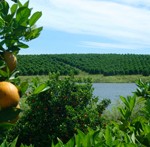 This 24-page report provides supply, demand, and price projections of Florida citrus for the 2013/14 season based on the November 2013 forecast of the 2013/14 Florida citrus crop, by variety. Projections are for Florida orange juice and grapefruit juice pack, movement, and ending inventory, along with estimates of US consumption and retail sales of OJ and GJ, preliminary on-tree price estimates, and Brazil’s OJ outlook (given its bearing on Florida’s OJ situation). Written by Matthew J. Salois, and published by the UF Department of Food and Resource Economics, September 2014.
This 24-page report provides supply, demand, and price projections of Florida citrus for the 2013/14 season based on the November 2013 forecast of the 2013/14 Florida citrus crop, by variety. Projections are for Florida orange juice and grapefruit juice pack, movement, and ending inventory, along with estimates of US consumption and retail sales of OJ and GJ, preliminary on-tree price estimates, and Brazil’s OJ outlook (given its bearing on Florida’s OJ situation). Written by Matthew J. Salois, and published by the UF Department of Food and Resource Economics, September 2014.
http://edis.ifas.ufl.edu/fe945
Purple Sunset Pomegranate (Punica granatum ‘PIIPG-1’)
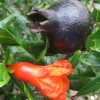 Purple Sunset is a new ornamental cultivar of pomegranate, Punica granatum. Purple Sunset pomegranate is distinguished from fruiting pomegranate by a bushy, compact habit and numerous flowers followed by small, ornamental, purple-black fruit. This 2-page fact sheet was written by Gary W. Knox, and published by the UF Department of Environmental Horticulture, June 2014.
Purple Sunset is a new ornamental cultivar of pomegranate, Punica granatum. Purple Sunset pomegranate is distinguished from fruiting pomegranate by a bushy, compact habit and numerous flowers followed by small, ornamental, purple-black fruit. This 2-page fact sheet was written by Gary W. Knox, and published by the UF Department of Environmental Horticulture, June 2014.
http://edis.ifas.ufl.edu/ep501
Planning a Successful Field Trip
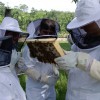 Field trips can be great experiences for youth to learn project content and life skills. Field trips also contribute to the experiential learning philosophy of 4-H. This document includes some suggestions to make a field trip fun, safe, and educational. This 3-page fact sheet was written by Keith G. Diem and Ben Knowles, and published by the UF Department of 4-H Youth Development, July 2014.
Field trips can be great experiences for youth to learn project content and life skills. Field trips also contribute to the experiential learning philosophy of 4-H. This document includes some suggestions to make a field trip fun, safe, and educational. This 3-page fact sheet was written by Keith G. Diem and Ben Knowles, and published by the UF Department of 4-H Youth Development, July 2014.
http://edis.ifas.ufl.edu/4h339
Adopting 4-H Club Bylaws
 Why does a 4-H club (for youth ages 8–18) need bylaws? For the same reason our country needs a constitution! By having fair and written rules, the rights of all members can be protected. The following is a suggested format for 4-H bylaws. The bylaws below may be adapted to meet local conditions. Be sure to send a copy of your club’s approved bylaws to your county 4-H office. Include in the bylaws the date when they were approved and most recently revised.This 3-page fact sheet was written by Keith G. Diem, Judy Levings, and Ben Knowles, and published by the UF Department of 4-H Youth Development, July 2014.
Why does a 4-H club (for youth ages 8–18) need bylaws? For the same reason our country needs a constitution! By having fair and written rules, the rights of all members can be protected. The following is a suggested format for 4-H bylaws. The bylaws below may be adapted to meet local conditions. Be sure to send a copy of your club’s approved bylaws to your county 4-H office. Include in the bylaws the date when they were approved and most recently revised.This 3-page fact sheet was written by Keith G. Diem, Judy Levings, and Ben Knowles, and published by the UF Department of 4-H Youth Development, July 2014.
http://edis.ifas.ufl.edu/4h338
The ABCs of 4-H: A Primer for 4-H Volunteers
 This information sheet is the introduction to the 4-H Volunteer Training Series (VTS). The series contains a wealth of information, from how to start a club, to planning field trips, to how to work with youth. This 5-page fact sheet was written by Keith G. Diem and Ben Knowles, and published by the UF Department of 4-H Youth Development, July 2014.
This information sheet is the introduction to the 4-H Volunteer Training Series (VTS). The series contains a wealth of information, from how to start a club, to planning field trips, to how to work with youth. This 5-page fact sheet was written by Keith G. Diem and Ben Knowles, and published by the UF Department of 4-H Youth Development, July 2014.
http://edis.ifas.ufl.edu/4h335
Analyzing Production Records of Commercial Sweet Orange Blocks to Measure Effects of Mechanical Harvesting on Long-Term Production and Tree Health
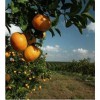 Ever since mechanical harvesting systems were introduced in the 1960s, growers expressed serious concerns over the potential negative impact mechanical harvesting could have on their trees. A study was undertaken in 2010 to analyze grower production data and compare whether mechanical harvesting had an adverse effect on fruit yield or shortened tree longevity as compared to hand harvesting. The purpose of this article is to describe how the study was organized and to summarize its results and conclusions. This 4-page fact sheet was written by Fritz M. Roka, Lisa H. House, and Katrina R. Mosley, and published by the UF Department of Food and Resource Economics, May 2014.
Ever since mechanical harvesting systems were introduced in the 1960s, growers expressed serious concerns over the potential negative impact mechanical harvesting could have on their trees. A study was undertaken in 2010 to analyze grower production data and compare whether mechanical harvesting had an adverse effect on fruit yield or shortened tree longevity as compared to hand harvesting. The purpose of this article is to describe how the study was organized and to summarize its results and conclusions. This 4-page fact sheet was written by Fritz M. Roka, Lisa H. House, and Katrina R. Mosley, and published by the UF Department of Food and Resource Economics, May 2014.
http://edis.ifas.ufl.edu/fe949
The Savvy Survey #17: Reporting Survey Findings
 Wrapping up the Savvy Survey Series, this fact sheet is the last of three publications that outline procedures to follow after implementing a survey. With the surveys in, data collected, and analyses conducted, the next logical step deals with communicating the results. Through communication, ideas and thoughts are shared with others in a manner that will be easily understood. In Extension, some common communication channels include the annual Report of Accomplishment (ROA), grant project reports, abstracts, and oral presentations. This 5-page fact sheet was written by Milton G. Newberry, III, Jessica L. Gouldthorpe, and Glenn D. Israel, and published by the UF Department of Agricultural Education and Communication, September 2014.
Wrapping up the Savvy Survey Series, this fact sheet is the last of three publications that outline procedures to follow after implementing a survey. With the surveys in, data collected, and analyses conducted, the next logical step deals with communicating the results. Through communication, ideas and thoughts are shared with others in a manner that will be easily understood. In Extension, some common communication channels include the annual Report of Accomplishment (ROA), grant project reports, abstracts, and oral presentations. This 5-page fact sheet was written by Milton G. Newberry, III, Jessica L. Gouldthorpe, and Glenn D. Israel, and published by the UF Department of Agricultural Education and Communication, September 2014.
http://edis.ifas.ufl.edu/pd081
Setting Goals to Promote Academic and Personal Achievement
 Learners begin to envision their futures in both academic and personal settings even as children. The future that we develop motivates us to engage in learning environments, work experiences, and social encounters/settings. As instructors, we have the opportunity to help learners develop academic and personal goals that will develop and shape their future. This 3-page fact sheet assists instructors in developing their knowledge of goal theory, thereby allowing them to assist learners in utilizing their personal and academic goals to develop goal-directed achievement behaviors. Written by Eric D. Rubenstein and Andrew C. Thoron, and published by the UF Department of Agricultural Education and Communication, 2014.
Learners begin to envision their futures in both academic and personal settings even as children. The future that we develop motivates us to engage in learning environments, work experiences, and social encounters/settings. As instructors, we have the opportunity to help learners develop academic and personal goals that will develop and shape their future. This 3-page fact sheet assists instructors in developing their knowledge of goal theory, thereby allowing them to assist learners in utilizing their personal and academic goals to develop goal-directed achievement behaviors. Written by Eric D. Rubenstein and Andrew C. Thoron, and published by the UF Department of Agricultural Education and Communication, 2014.
http://edis.ifas.ufl.edu/wc166
The Savvy Survey #16: Data Analysis and Survey Results
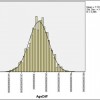 Continuing the Savvy Survey Series, this fact sheet is one of three focused on working with your survey data. In its most raw form, the data collected from surveys do not tell much of a story except who completed the survey, partially completed it, or did not respond at all. To truly interpret the data, it must be analyzed. Where does one begin the data analysis process? What computer program(s) can be used to analyze data? How should the data be analyzed? This publication serves to answer these questions. This 7-page fact sheet was written by Milton G. Newberry, III, Jessica L. Gouldthorpe, and Glenn D. Israel, and published by the UF Department of Agricultural Education and Communication, August 2014.
Continuing the Savvy Survey Series, this fact sheet is one of three focused on working with your survey data. In its most raw form, the data collected from surveys do not tell much of a story except who completed the survey, partially completed it, or did not respond at all. To truly interpret the data, it must be analyzed. Where does one begin the data analysis process? What computer program(s) can be used to analyze data? How should the data be analyzed? This publication serves to answer these questions. This 7-page fact sheet was written by Milton G. Newberry, III, Jessica L. Gouldthorpe, and Glenn D. Israel, and published by the UF Department of Agricultural Education and Communication, August 2014.
http://edis.ifas.ufl.edu/pd080
The Savvy Survey #15: Survey Responses and Data Entry
 This publication discusses the procedures for entering paper-based survey responses into an electronic database and preparing (or “cleaning”) all data, regardless of mode, for analysis. It also addresses data entry considerations for closed-ended questions (with response choices), partially-closed questions, and open-ended questions, since the types of questions used in the survey will also impact the data entry process.This 5-page fact sheet was written by Milton G. Newberry, III, Jessica L. Gouldthorpe, and Glenn D. Israel, and published by the UF Department of Agricultural Education and Communication, August 2014.
This publication discusses the procedures for entering paper-based survey responses into an electronic database and preparing (or “cleaning”) all data, regardless of mode, for analysis. It also addresses data entry considerations for closed-ended questions (with response choices), partially-closed questions, and open-ended questions, since the types of questions used in the survey will also impact the data entry process.This 5-page fact sheet was written by Milton G. Newberry, III, Jessica L. Gouldthorpe, and Glenn D. Israel, and published by the UF Department of Agricultural Education and Communication, August 2014.
http://edis.ifas.ufl.edu/pd079
Advertising and Promotions in the US Green Industry
 US firms that sell nursery and garden products have become more interested in effective advertising and promotion strategies. A major question for these green industry firms is how to stimulate additional sales. This 3-page fact sheet was written by Hayk Khachatryan, Alicia Rihn, Marco A. Palma, and Charles R. Hall, and published by the UF Department of Food and Resource Economics, August 2014.
US firms that sell nursery and garden products have become more interested in effective advertising and promotion strategies. A major question for these green industry firms is how to stimulate additional sales. This 3-page fact sheet was written by Hayk Khachatryan, Alicia Rihn, Marco A. Palma, and Charles R. Hall, and published by the UF Department of Food and Resource Economics, August 2014.
http://edis.ifas.ufl.edu/fe948
Mexican Sycamore (Platanus mexicana)
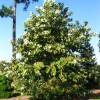 Mexican sycamore (Platanus Mexicana) is a fast growing, drought tolerant tree boasting smooth white and tan bark and large, maple-like leaves with velvety, silver undersides. Native to northeastern and central Mexico, this tree’s cold hardiness is not well defined. However, Mexican sycamore grows well as far north as USDA Cold Hardiness Zone 8b in Texas and Florida. This 2-page fact sheet was written by Gary W. Knox, and published by the UF Department of Environmental Horticulture, June 2014.
Mexican sycamore (Platanus Mexicana) is a fast growing, drought tolerant tree boasting smooth white and tan bark and large, maple-like leaves with velvety, silver undersides. Native to northeastern and central Mexico, this tree’s cold hardiness is not well defined. However, Mexican sycamore grows well as far north as USDA Cold Hardiness Zone 8b in Texas and Florida. This 2-page fact sheet was written by Gary W. Knox, and published by the UF Department of Environmental Horticulture, June 2014.
http://edis.ifas.ufl.edu/ep502
Weed Management Principles in Commercial Vegetable Production
 Weeds compete with vegetable crops for light, water, and nutrients. This competition decreases plant vigor, yield, and crop quality. They interfere with hand harvest and can complicate or prevent machine harvest. Weeds also serve as alternative hosts to diseases, viruses, and nematodes. A successful weed management program will incorporate multiple control practices with preventative, cultural, biological, mechanical, and chemical methods.
Weeds compete with vegetable crops for light, water, and nutrients. This competition decreases plant vigor, yield, and crop quality. They interfere with hand harvest and can complicate or prevent machine harvest. Weeds also serve as alternative hosts to diseases, viruses, and nematodes. A successful weed management program will incorporate multiple control practices with preventative, cultural, biological, mechanical, and chemical methods.
This 6-page fact sheet was written by Peter Dittmar and Nathan Boyd, and published by the UF Department of Horticultural Sciences, July 2014.
http://edis.ifas.ufl.edu/cv113